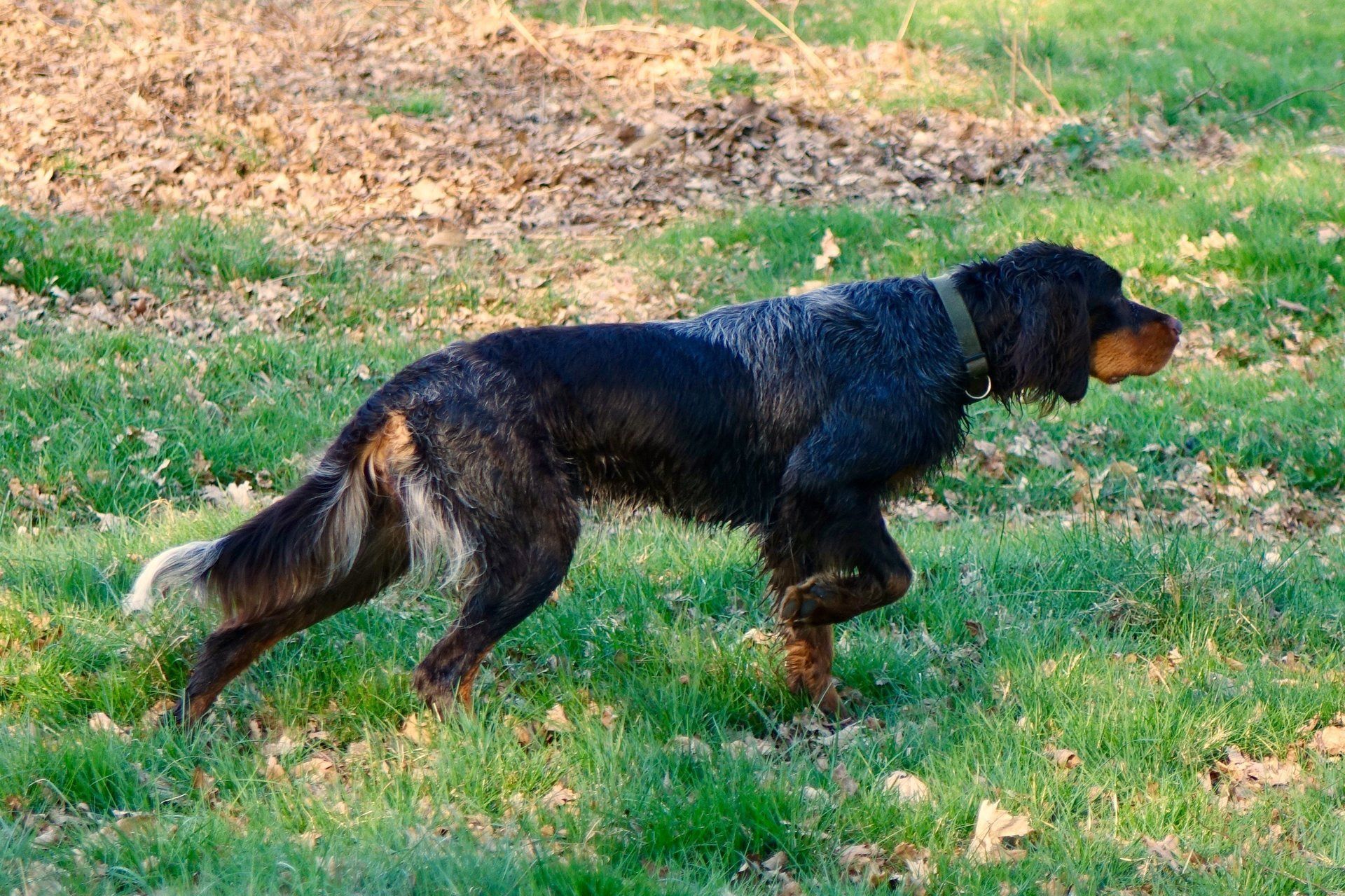The Épagneul Picard

Recognition
The breed is not currently recognised by the UK Kennel Club. The breed is classified under the FCI (Federation Cynologique Internationale) under Group 7 (FCI Breed Standard No 108/25.09.1998/GB) and also recognised by the North American Kennel Club, the American Rare Breed Association and the Continental Kennel Club. It is also registered in Canada and the USA within the framework of NAVHDA (North American Versatile Hunting Dog Association).
Temperament
Of sound temperament, is devoted to its master and good with children. It is kind and loyal and quickly becomes part of the family pack. In everyday life, it will be the most docile of companions that will equally enjoy being taking for country walks or lounging at home. This is a breed that thrives on care and attention, who needs an active family that can devote plenty of time to it both through physical exercise, training and companionship. They can suffer from separation anxiety if left in solitude for unreasonable lengths of time.
Of a sensitive nature and that is slow to mature, this breed is one that does not respond well to harsh treatment but develops best on love and positive reinforcement. The breed is an intelligent companion hunting dog and should never be kennelled and experience has shown that the kennelled dog will become depressed and mentally shut down. Sensitive handling is rewarded with natural hunting ability and instinct which demands little training to and is instinctive to the dog in most cases. It is not unusual for a Picardy Spaniel to only needed to be shown game birds in the field to know what to do. Has a sensitive nose and a seriousness to its work, with sound judgement and a methodical manner.
Size
A muscular and elegant breed with a powerful form, both males and females ideally 55 to 60cm in height (to the withers) with a tolerance of +2cm for males. Weight normally falls between 20 and 35kg.
Health
The breed has the usual health issues of many dog breeds with ectropian and entropian present in some breed lines. Hip dysplasia is uncommon but not unheard of and in France and the UK hips are X-rayed and categorised by a certified Vet before breeding is permitted. Ears are susceptible as in most working dogs to infection, but with proper cleanliness and care are otherwise fine.
Coat and Colour
The coat is dense and medium in length. It is slightly coarse and slightly wavy on the body with long feathering on the back of the legs and tail, and finer hair on the head. Colouring is described as grey with brown patches, most often marked with tan highlights on the head around the muzzle and eyebrows, and on the legs. The grey is actually a mixture of the brown and white creating an illusion of grey. Too much brown is considered a fault. Plain white dapples or patches is not permitted and is considered a fault. Black is not permitted and is a fault. Eyes are expressive and amber in colour, and ears are long with silky, wavy hair set low on the back of the rounded Setter like head.
Working
The breed is not a flushing Spaniel like the Springer or Cocker but instead is defined as an HPR- a hunt, point and retrieve gundog. It is a breed built for a harsh environment and works well on either land or in water.
Hunt- The Picardy hunts at a medium range and speed with an instinctive ability to vary its hunting style dependant on the game pursued and the terrain being followed. They are not frantic but measured and deliberate in their hunting style and work harmoniously with their master and the surrounding landscape.
Point- They have a natural flair as a pointer and do so in an upright position, often stalking their prey in a feline manner, like a lioness hunting her quarry.
Retrieve- They are a soft mouthed natural retriever, a skill which develops early and because of the intelligence and character of the breed it can be developed further.
Due to the diversity of the habitat of the Picardy region, the hunters in this area needed a hardy, versatile and willing dog. The Picardy will hunt whatever the weather, on small game or waterfowl, over plains, swamps, marshes, rivers or in thicket. It is for these reasons that the breed as a working gundog now faces renewed attention.
In Germany and Austria the breed is also used for tracking. Any number of dog sports such as canicross, agility, flyball and competitive obedience are ideally suited to the Picardy Spaniel who thrives on working for and pleasing it’s master.

